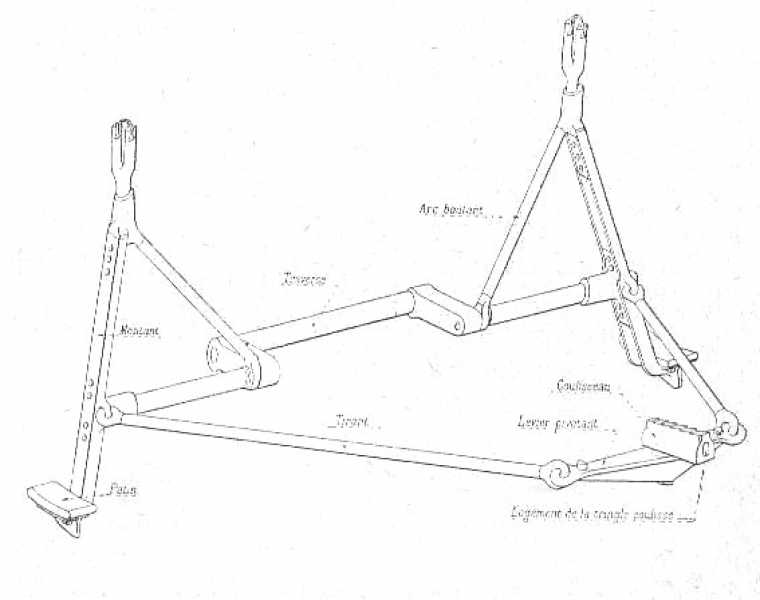I found this pamphlet the other day while looking for more info on the 75, and learned that the reason that the trail was lifted off the ground to a certain angle was to enable a mechanism to lower the shoes/blocks down, so that the wheels were literally supported on locked shoes that raised them off the ground, making a stationary three-point (the third point being the trail spade) firing platform. The firing of the gun with the barrel rigid was done in order to more firmly set this three point platform into the ground.
I also remembered that Dominic incorporated this feature on one of his 75 models, and that he had posted a video of its operation here some time ago.
This pamphlet published by the War Department in 1917 is a reprint of a British article first published in 1915.
Notes On The French 75-MM. Gun - PP. 7-8, Fig. 3.
http://www.archive.org/stream/notesonfrenchmm00usgoog#page/n10/mode/2upAn article on the French 75mm cannon
http://www.landships.freeservers.com/french_75.htm"But this wasn't the only invention in the "75"; the "75" was really a whole system of new concepts. The hydro-pneumatic recoil system was also combined with a so called trail or earth spade at the end of the trail, that cut into the ground, holding the gun steady (of course an impossibility in a rigid carriage as this would have caused the gun to topple over due to the force of the recoil), and what the French called an Abatage, or wheel anchor; the abatage fixed the wheels as well with the help of a metal shoe, placed underneath the wheels, rigidly attached to the trail, when the gun was emplaced.
This meant that the gun (if properly placed) could be fired without moving at all, which meant that the gun layer didn't have to reposition the gun after each shot, perhaps only checking it, and that it could be reloaded a whole lot faster, as the loader only had to wait for the gun tube to recoil back, before putting another round into the breech. Also; the gun layer only had the responsibility for the side sighting, the elevation was left to the breech operator to the right, an arrangement that also speeded up the working of the gun."
Drawing of wheel anchor taken from the above article/site.
